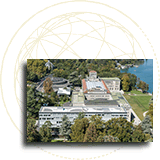UNDERSTANDING THE WTO:
THE AGREEMENTS
Tariffs: more bindings and closer to zero
The bulkiest results of Uruguay Round are the 22,500 pages listing individual countries’ commitments on specific categories of goods and services. These include commitments to cut and “bind” their customs duty rates on imports of goods. In some cases, tariffs are being cut to zero. There is also a significant increase in the number of “bound” tariffs — duty rates that are committed in the WTO and are difficult to raise.
See also:
> Goods
schedules
> Services schedules
Tariff cuts
Developed countries’ tariff cuts were for the most part phased in over five years from 1 January 1995. The result is a 40% cut in their tariffs on industrial products, from an average of 6.3% to 3.8%. The value of imported industrial products that receive duty-free treatment in developed countries will jump from 20% to 44%.
There will also be fewer products charged high duty rates. The proportion of imports into developed countries from all sources facing tariffs rates of more than 15% will decline from 7% to 5%. The proportion of developing country exports facing tariffs above 15% in industrial countries will fall from 9% to 5%.
The Uruguay Round package has been improved. On 26 March 1997, 40 countries accounting for more than 92% of world trade in information technology products, agreed to eliminate import duties and other charges on these products by 2000 (by 2005 in a handful of cases). As with other tariff commitments, each participating country is applying its commitments equally to exports from all WTO members (i.e. on a most-favoured-nation basis), even from members that did not make commitments.
back to top
More bindings
Developed countries increased the number of imports whose tariff rates are “bound” (committed and difficult to increase) from 78% of product lines to 99%. For developing countries, the increase was considerable: from 21% to 73%. Economies in transition from central planning increased their bindings from 73% to 98%. This all means a substantially higher degree of market security for traders and investors.
> See also Doha Agenda negotiations
back to top
And agriculture ...
Tariffs on all agricultural products are now bound. Almost all import restrictions that did not take the form of tariffs, such as quotas, have been converted to tariffs — a process known as “tariffication”. This has made markets substantially more predictable for agriculture. Previously more than 30% of agricultural produce had faced quotas or import restrictions. The first step in “tariffication” was to replace these restrictions with tariffs that represented about the same level of protection. Then, over six years from 1995-2000, these tariffs were gradually reduced (the reduction period for developing countries ends in 2005). The market access commitments on agriculture also eliminate previous import bans on certain products.
In addition, the lists include countries’ commitments to reduce domestic support and export subsidies for agricultural products. (See section on agriculture.)
Share
What is this agreement called?
There is no legally binding agreement that sets out the targets for tariff reductions (e.g. by what percentage they were to be cut as a result of the Uruguay Round).
Instead, individual countries listed their commitments in schedules annexed to Marrakesh Protocol to the General Agreement on Tariffs and Trade 1994. This is the legally binding agreement for the reduced tariff rates. Since then, additional commitments were made under the 1997 Information Technology Agreement.
The market access schedules are not simply announcements of tariff rates. They represent commitments not to increase tariffs above the listed rates — the rates are “bound”. For developed countries, the bound rates are generally the rates actually charged. Most developing countries have bound the rates somewhat higher than the actual rates charged, so the bound rates serve as ceilings.
Countries can break a commitment (i.e. raise a tariff above the bound rate), but only with difficulty. To do so they have to negotiate with the countries most concerned and that could result in compensation for trading partners’ loss of trade.
